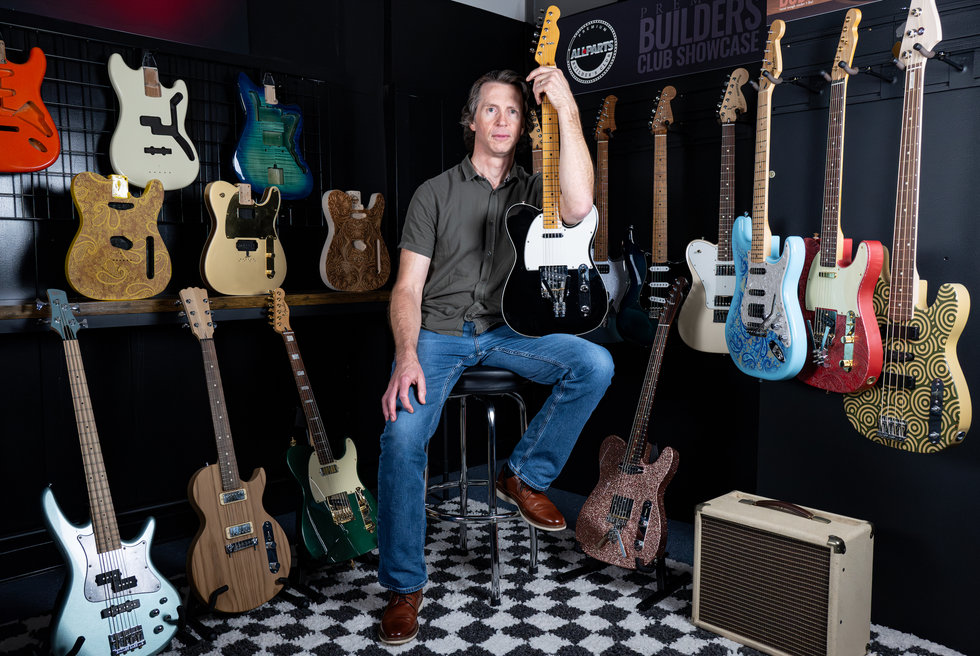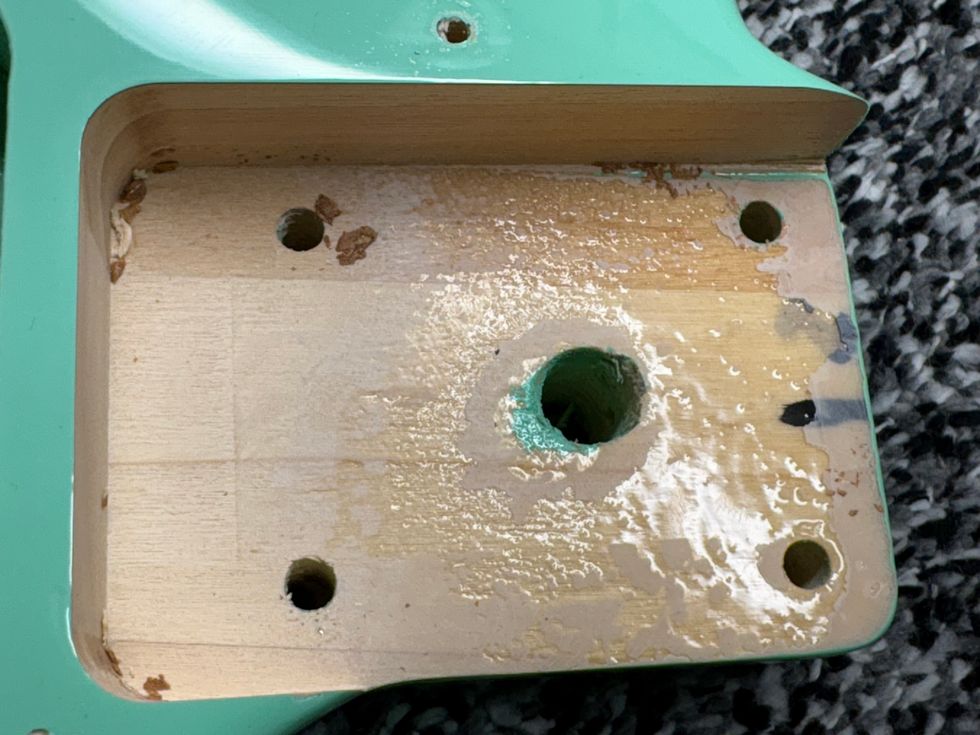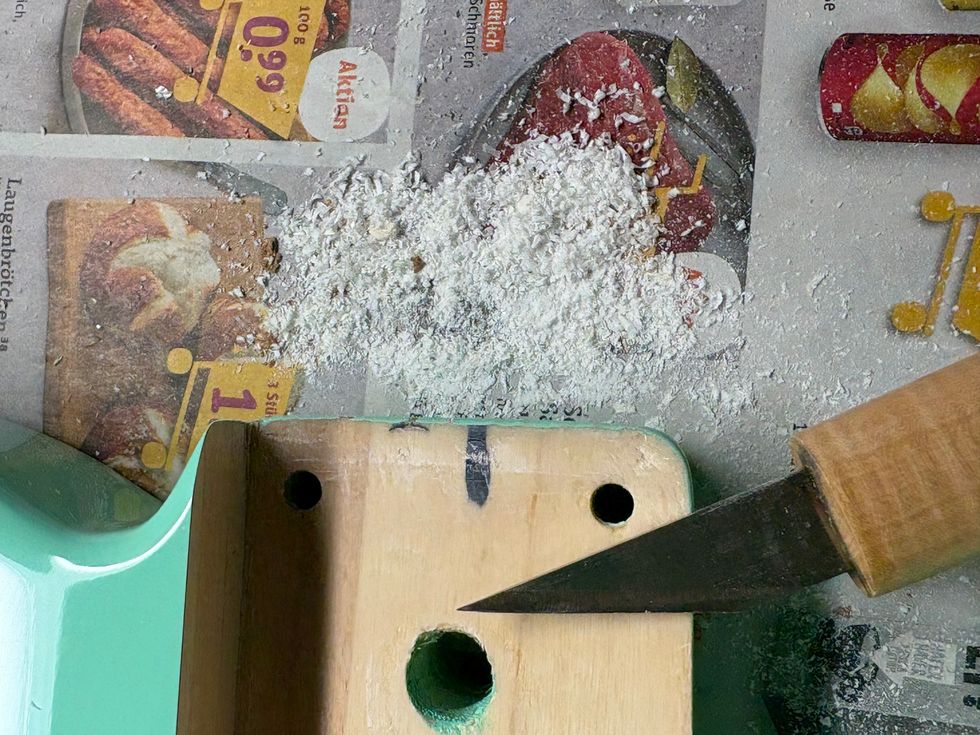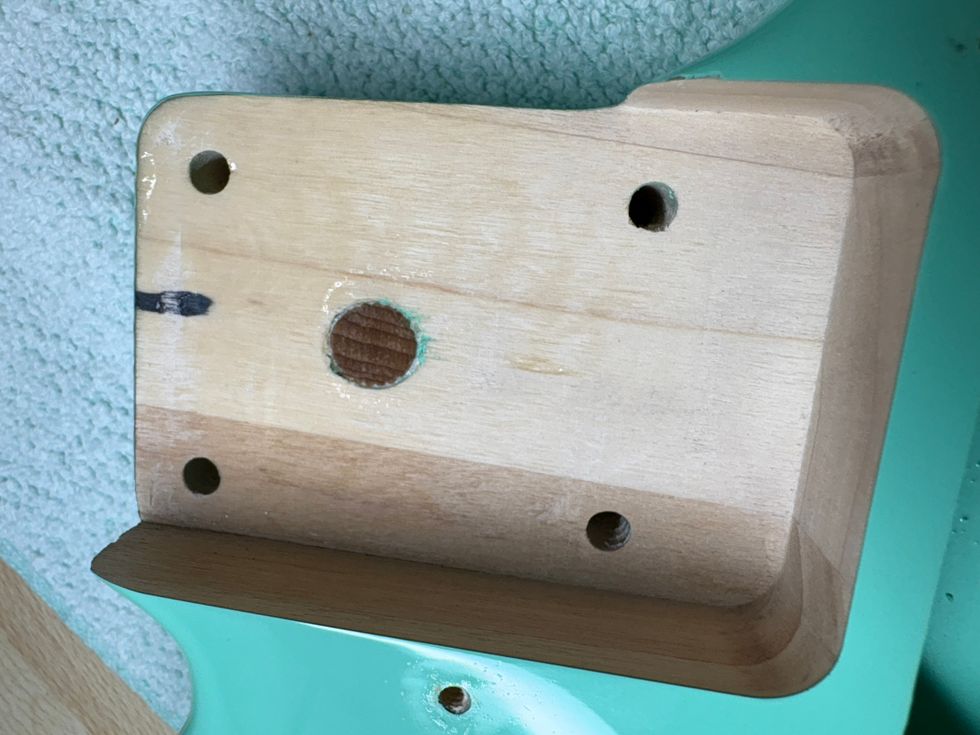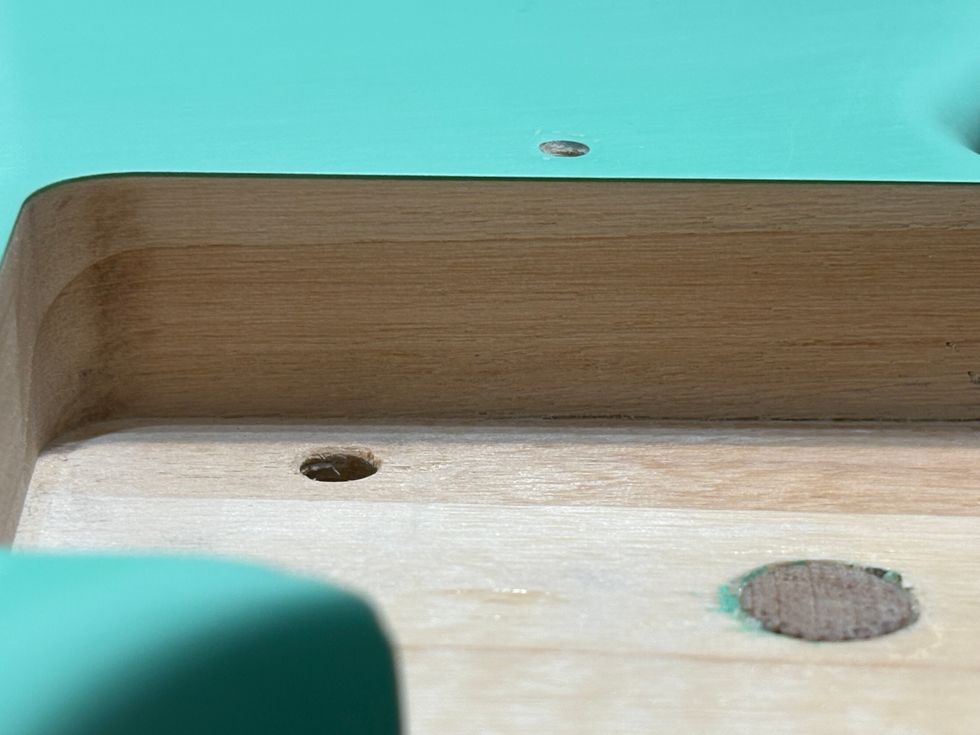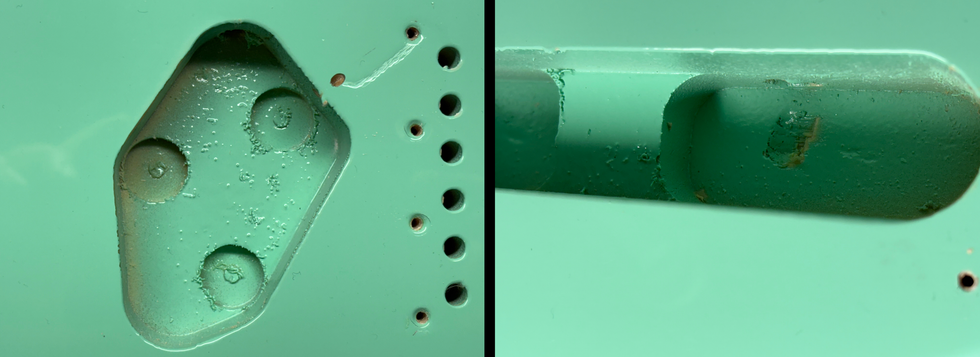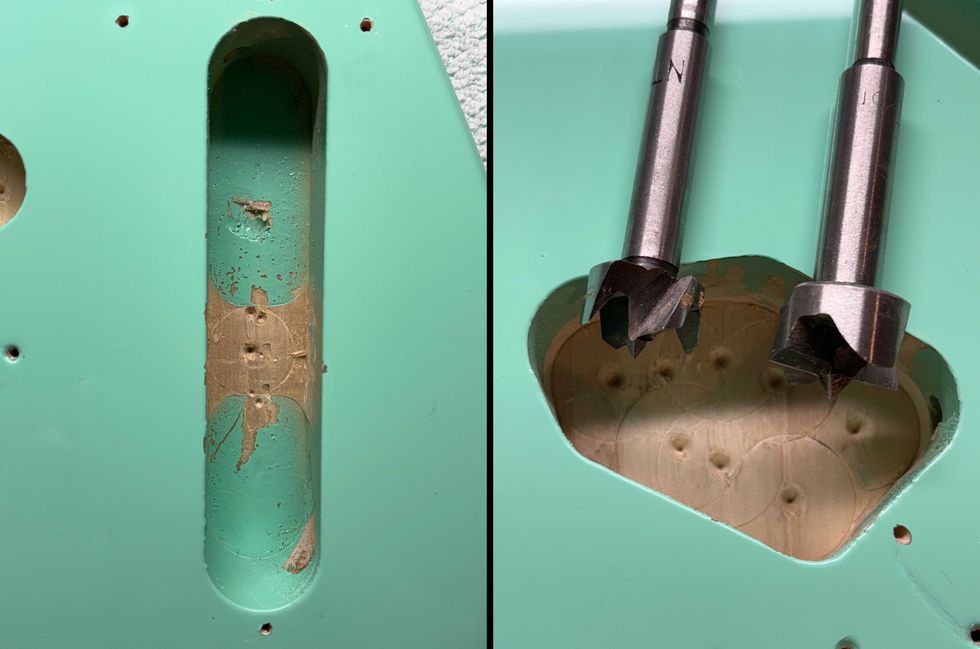1. Using too much gain
Many rock and metal guitarists think that more distortion equals better and heavier tone. Not the case! Of course you want your tone to rage, but keep in mind that the more you distort your tone, the more it gets “squared off”—you lose attack and punch, and the transients aren’t as sharp. You want to balance gain and saturation with punch and attack. It’s certainly easier when you have tons of distortion to hide behind, but the net result tends to sound more sloppy than heavy.
If you use amplifier distortion, set the gain where you normally would. Then just back it down a notch and bump the master volume up a hair. If your distortion comes from a pedal, back down on the gain or overdrive control while boosting the level knob a bit. Practice like this for a while until you get used to it, making sure you get a handle on any muting or open string ringing sloppiness, and you’ll find that your playing sounds heavier, tighter, and tougher.
2. Choosing budget power supplies over isolated power supplies
Sure, the thought of powering all your pedals off one adapter for under $40 can be enticing. But the truth is, many effects pedals, like delay or modulation effects, need an isolated power supply. If you power a series of pedals using only a single adapter and daisy-chaining, and one or more of the pedals needs an isolated power supply, it's possible that you'll be greeted with unruly hum and noise. Units like the Voodoo Lab Pedal Power 2 Plus, BBE Supa-Charger, T-Rex FuelTank, or ModTone Power Plant feature an isolated supply for every output, and the net result is a quiet pedalboard. Isolated power supplies will cost quite a bit more, but is truly a case of getting what you pay for.
3. Gigging without a backup plan
You need a backup plan. This means having a backup for every single thing in your rig. You wouldn’t head to a gig with just one guitar pick, would you? Ok, maybe I’ve done that once or twice—but I digress!
I suggest having a backup for everything. This means picks, strings, batteries, fuses, tubes, and guitars—every single thing in your rig. At one time or another, I’ve had just about every single thing break in my rig. It’s a good feeling knowing you have it covered, should something go wrong. With the advent of modeling devices, you can easily create a virtual backup rig that mimics your real amp and effects setup. If your rig goes down, you can just plug into the PA and finish the gig without missing a beat. I also suggest picking up a super-portable Crate Powerblock (discontinued, but they still pop up on eBay) or one of the new “amp-in-pedal” units like the Electro-Harmonix 22 Caliber. These will power a speaker cabinet and sound surprisingly good. If your main amp craps out, you’re covered!

ZZ Top's Billy Gibbons tours with a completely duplicate rack as an emergency backup.
4. Running multiple amps without checking phase coherency
If you run a multiple-amp rig, it’s imperative that you make sure all the amplifiers are in phase! Otherwise, your tone onstage might seem great, but it will sound very thin and small through the PA. It’s pretty easy to tell if your amps are in phase—place the amps and cabs beside one another, set them at the same volume, and sit in front of the cabinets. While playing, move your head from side to side in front of the cabs. If the sound gets very hollow and thin at the spot in the middle of the two cabinets, then your amps are out of phase. This isn’t a subtle phenomenon—you will know it when you hear it.
If you are using heads and cabinets, the easiest and most inexpensive way to correct the problem is using a reverse-phase (or polarity) speaker cable on one of the amps. Lava Cable’s Mark Stoddard (mark@lavacable.com) is a great technical resource and can help you find the right one.
If you are using two combo amps, the easiest solution would be an A/B box with polarity (phase) reverse switches, like the Radial Bigshot ABY. This box also has ground lift switches, allowing you to safely eliminate ground loops that occur when using two or more amps together.
5. Dialing in your live tones at home or in a small, dead space
If you’ve dialed in your tones at home or in your rehearsal space, it’s possible that they won’t translate very well to a big, ambient, bright venue. I find I often have to use less reverb and/or delay in big rooms, since these effects tend to wash out your tone in spaces that already sound ambient. Also, you may need to dial back the treble and presence on stages with hard, reflective surfaces or in loud, brash, ambient rooms.
I have my delays and reverbs on an expression pedal on my pedalboard, so I can mix them in on the fly. Also, because I use a wet/dry/wet rig, and the soundman has separate control over the dry and wet guitar signals, he can dial the wet stuff back if it’s an especially ambient room—something not possible if you run your effects in an amp effects loop or through the front end of your amp.
If a stage sounds bright and harsh, I’ll sometimes ask the local crew if they have an extra drum rug—the rugs they use under a drummer’s kit—and I’ll put the rug right in front of my cabinets so it absorbs some of the brash, high-end reflection.
If you use a wireless, try jumping off the stage during soundcheck and walking out into the first few rows to check your tone in the room. I really like to see how my guitar sound translates in the PA, and also I like to make sure the tone coming from my cabinets isn’t going to take people’s heads off in the first few rows. Even better, have someone else play through your rig so you can walk out front and really scrutinize your tones in the house. This can be an enlightening and sobering experience. It’ll also become immediately apparent whether your microphones and mic positioning are delivering the way you’d like them to.
Good luck out there, working guitarists. What are some common mistakes you’d like to see discussed in a future column?
 Pete Thorn is a Los Angeles-based guitarist, currently touring with Melissa Etheridge. His solo album Guitar Nerd will be out in early 2011.You can read more about his career and music at peterthorn.com.
Pete Thorn is a Los Angeles-based guitarist, currently touring with Melissa Etheridge. His solo album Guitar Nerd will be out in early 2011.You can read more about his career and music at peterthorn.com.
Many rock and metal guitarists think that more distortion equals better and heavier tone. Not the case! Of course you want your tone to rage, but keep in mind that the more you distort your tone, the more it gets “squared off”—you lose attack and punch, and the transients aren’t as sharp. You want to balance gain and saturation with punch and attack. It’s certainly easier when you have tons of distortion to hide behind, but the net result tends to sound more sloppy than heavy.
If you use amplifier distortion, set the gain where you normally would. Then just back it down a notch and bump the master volume up a hair. If your distortion comes from a pedal, back down on the gain or overdrive control while boosting the level knob a bit. Practice like this for a while until you get used to it, making sure you get a handle on any muting or open string ringing sloppiness, and you’ll find that your playing sounds heavier, tighter, and tougher.
2. Choosing budget power supplies over isolated power supplies
Sure, the thought of powering all your pedals off one adapter for under $40 can be enticing. But the truth is, many effects pedals, like delay or modulation effects, need an isolated power supply. If you power a series of pedals using only a single adapter and daisy-chaining, and one or more of the pedals needs an isolated power supply, it's possible that you'll be greeted with unruly hum and noise. Units like the Voodoo Lab Pedal Power 2 Plus, BBE Supa-Charger, T-Rex FuelTank, or ModTone Power Plant feature an isolated supply for every output, and the net result is a quiet pedalboard. Isolated power supplies will cost quite a bit more, but is truly a case of getting what you pay for.
I suggest having a backup for everything. This means picks, strings, batteries, fuses, tubes, and guitars—every single thing in your rig.
3. Gigging without a backup plan
You need a backup plan. This means having a backup for every single thing in your rig. You wouldn’t head to a gig with just one guitar pick, would you? Ok, maybe I’ve done that once or twice—but I digress!
I suggest having a backup for everything. This means picks, strings, batteries, fuses, tubes, and guitars—every single thing in your rig. At one time or another, I’ve had just about every single thing break in my rig. It’s a good feeling knowing you have it covered, should something go wrong. With the advent of modeling devices, you can easily create a virtual backup rig that mimics your real amp and effects setup. If your rig goes down, you can just plug into the PA and finish the gig without missing a beat. I also suggest picking up a super-portable Crate Powerblock (discontinued, but they still pop up on eBay) or one of the new “amp-in-pedal” units like the Electro-Harmonix 22 Caliber. These will power a speaker cabinet and sound surprisingly good. If your main amp craps out, you’re covered!
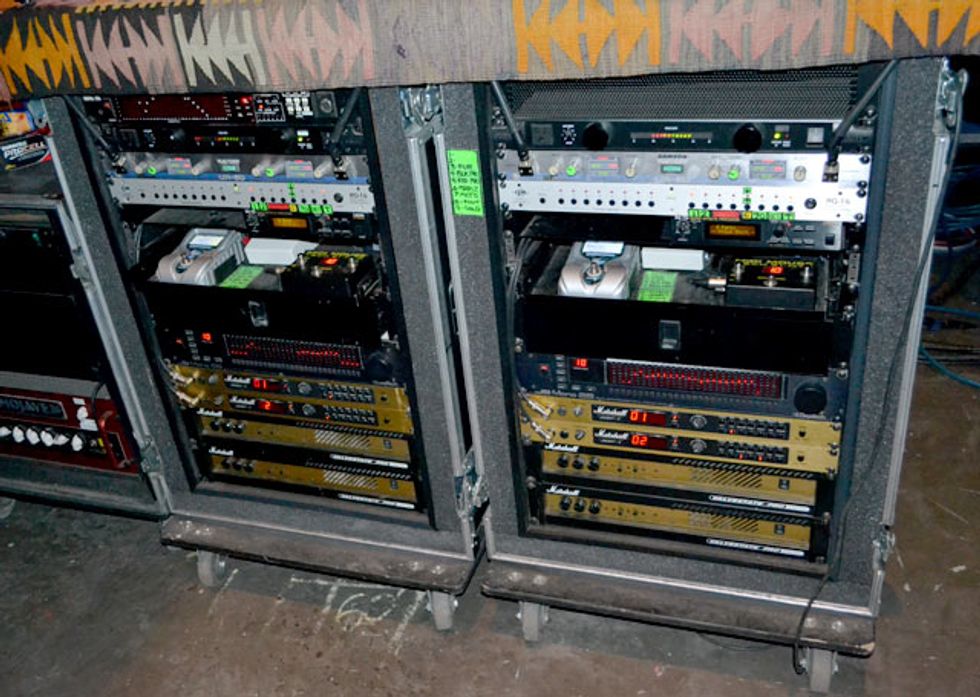
ZZ Top's Billy Gibbons tours with a completely duplicate rack as an emergency backup.
4. Running multiple amps without checking phase coherency
If you run a multiple-amp rig, it’s imperative that you make sure all the amplifiers are in phase! Otherwise, your tone onstage might seem great, but it will sound very thin and small through the PA. It’s pretty easy to tell if your amps are in phase—place the amps and cabs beside one another, set them at the same volume, and sit in front of the cabinets. While playing, move your head from side to side in front of the cabs. If the sound gets very hollow and thin at the spot in the middle of the two cabinets, then your amps are out of phase. This isn’t a subtle phenomenon—you will know it when you hear it.
If you are using heads and cabinets, the easiest and most inexpensive way to correct the problem is using a reverse-phase (or polarity) speaker cable on one of the amps. Lava Cable’s Mark Stoddard (mark@lavacable.com) is a great technical resource and can help you find the right one.
If you are using two combo amps, the easiest solution would be an A/B box with polarity (phase) reverse switches, like the Radial Bigshot ABY. This box also has ground lift switches, allowing you to safely eliminate ground loops that occur when using two or more amps together.
5. Dialing in your live tones at home or in a small, dead space
If you’ve dialed in your tones at home or in your rehearsal space, it’s possible that they won’t translate very well to a big, ambient, bright venue. I find I often have to use less reverb and/or delay in big rooms, since these effects tend to wash out your tone in spaces that already sound ambient. Also, you may need to dial back the treble and presence on stages with hard, reflective surfaces or in loud, brash, ambient rooms.
I have my delays and reverbs on an expression pedal on my pedalboard, so I can mix them in on the fly. Also, because I use a wet/dry/wet rig, and the soundman has separate control over the dry and wet guitar signals, he can dial the wet stuff back if it’s an especially ambient room—something not possible if you run your effects in an amp effects loop or through the front end of your amp.
If a stage sounds bright and harsh, I’ll sometimes ask the local crew if they have an extra drum rug—the rugs they use under a drummer’s kit—and I’ll put the rug right in front of my cabinets so it absorbs some of the brash, high-end reflection.
If you use a wireless, try jumping off the stage during soundcheck and walking out into the first few rows to check your tone in the room. I really like to see how my guitar sound translates in the PA, and also I like to make sure the tone coming from my cabinets isn’t going to take people’s heads off in the first few rows. Even better, have someone else play through your rig so you can walk out front and really scrutinize your tones in the house. This can be an enlightening and sobering experience. It’ll also become immediately apparent whether your microphones and mic positioning are delivering the way you’d like them to.
Good luck out there, working guitarists. What are some common mistakes you’d like to see discussed in a future column?
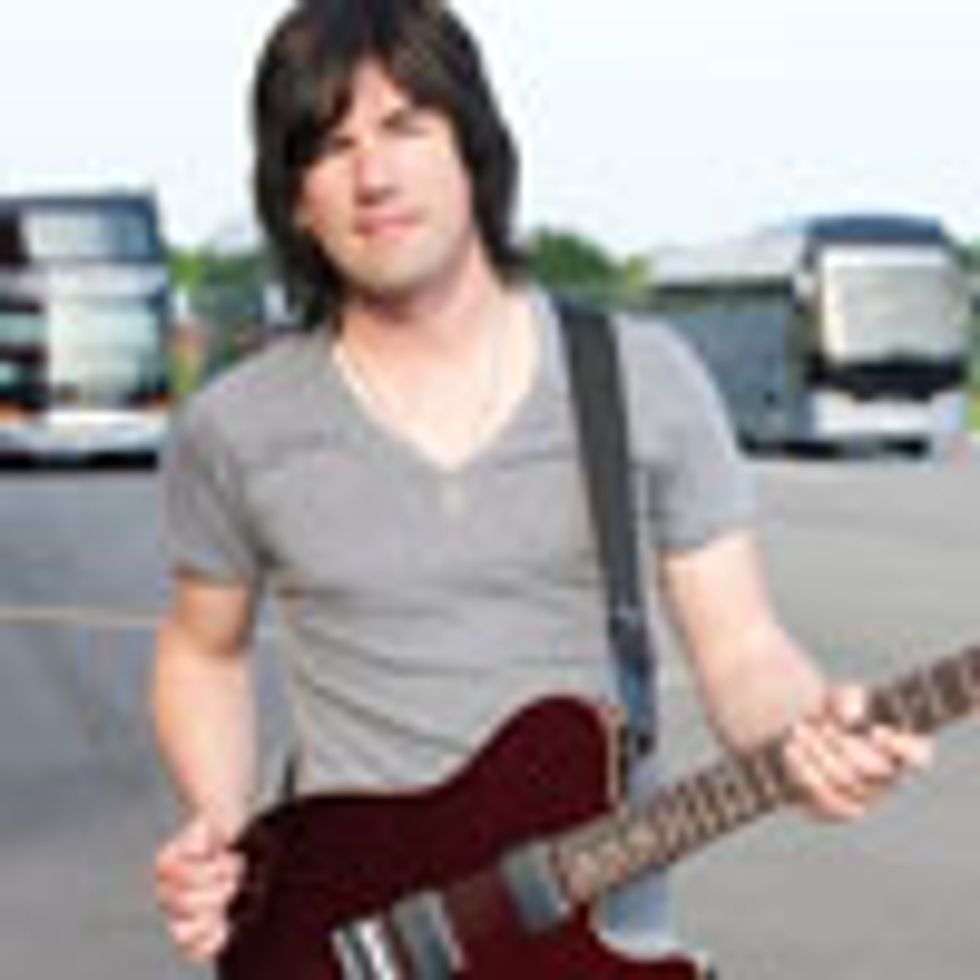 Pete Thorn is a Los Angeles-based guitarist, currently touring with Melissa Etheridge. His solo album Guitar Nerd will be out in early 2011.You can read more about his career and music at peterthorn.com.
Pete Thorn is a Los Angeles-based guitarist, currently touring with Melissa Etheridge. His solo album Guitar Nerd will be out in early 2011.You can read more about his career and music at peterthorn.com.

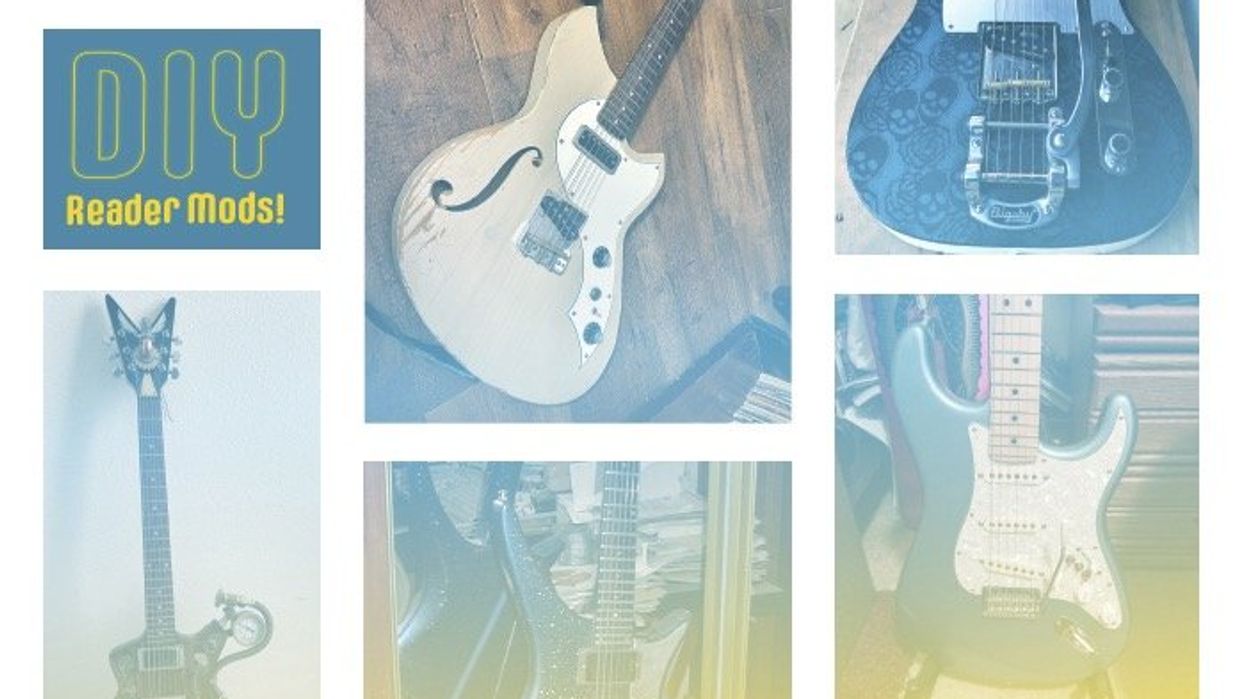
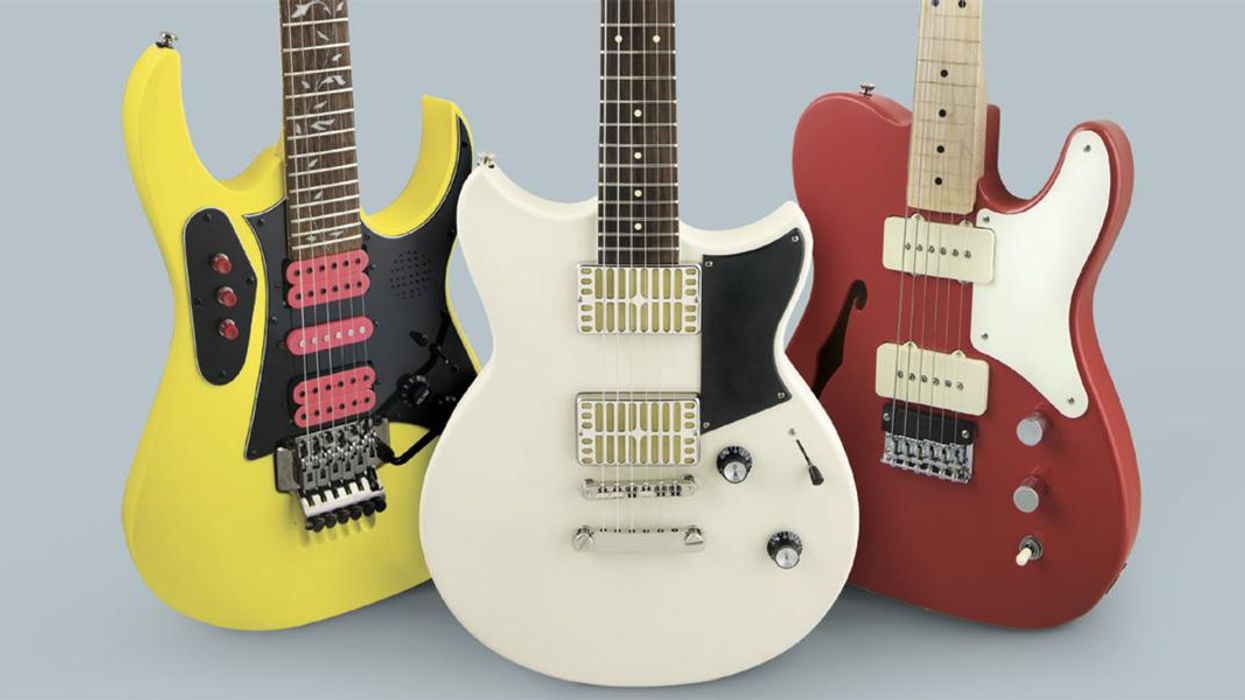
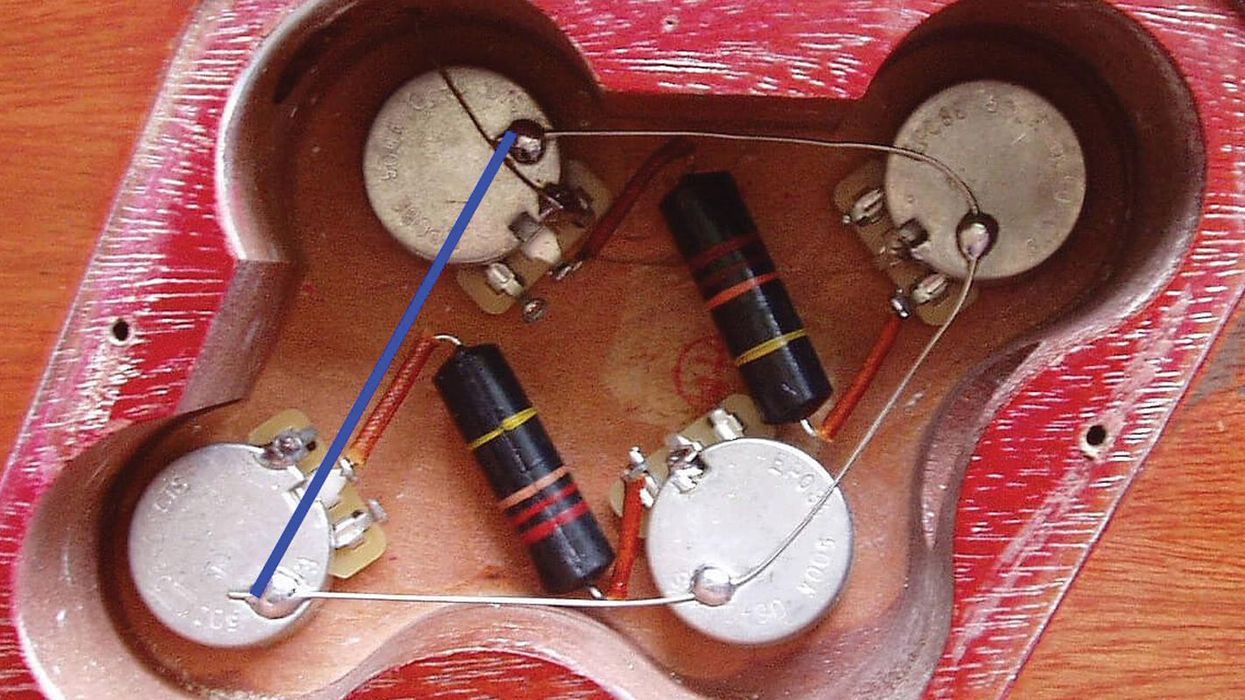
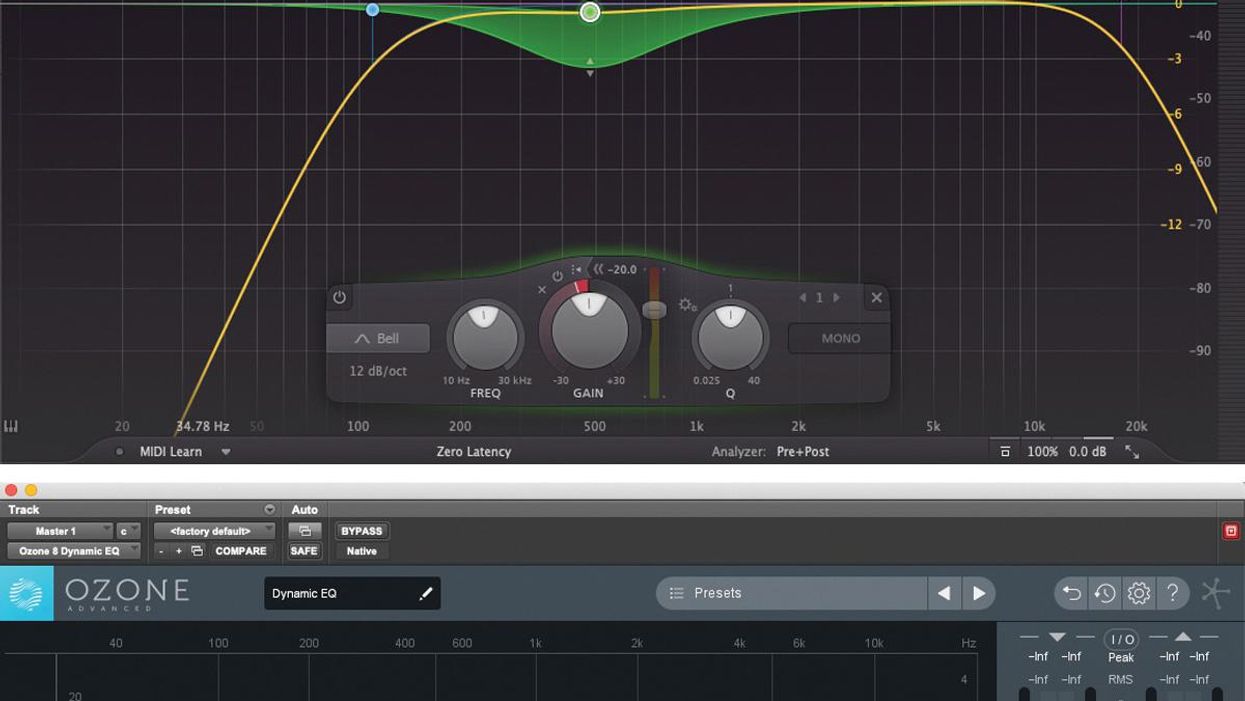






![Rig Rundown: Russian Circles’ Mike Sullivan [2025]](https://www.premierguitar.com/media-library/youtube.jpg?id=62303631&width=1245&height=700&quality=70&coordinates=0%2C0%2C0%2C0)





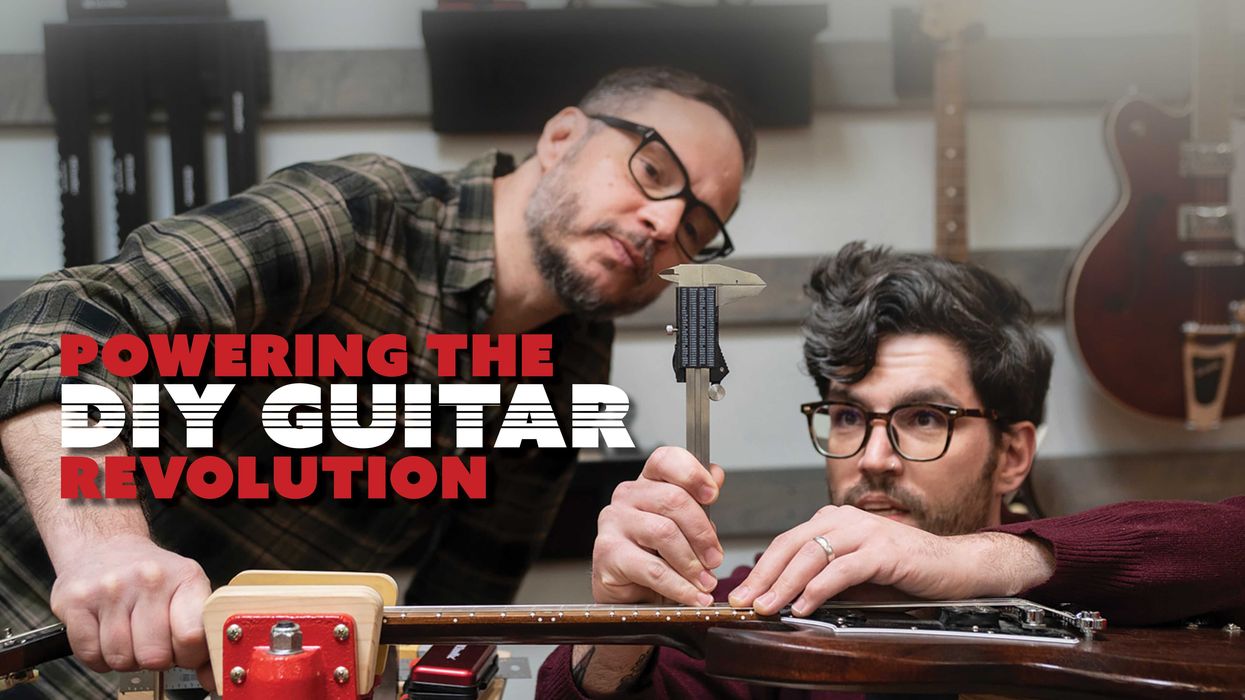
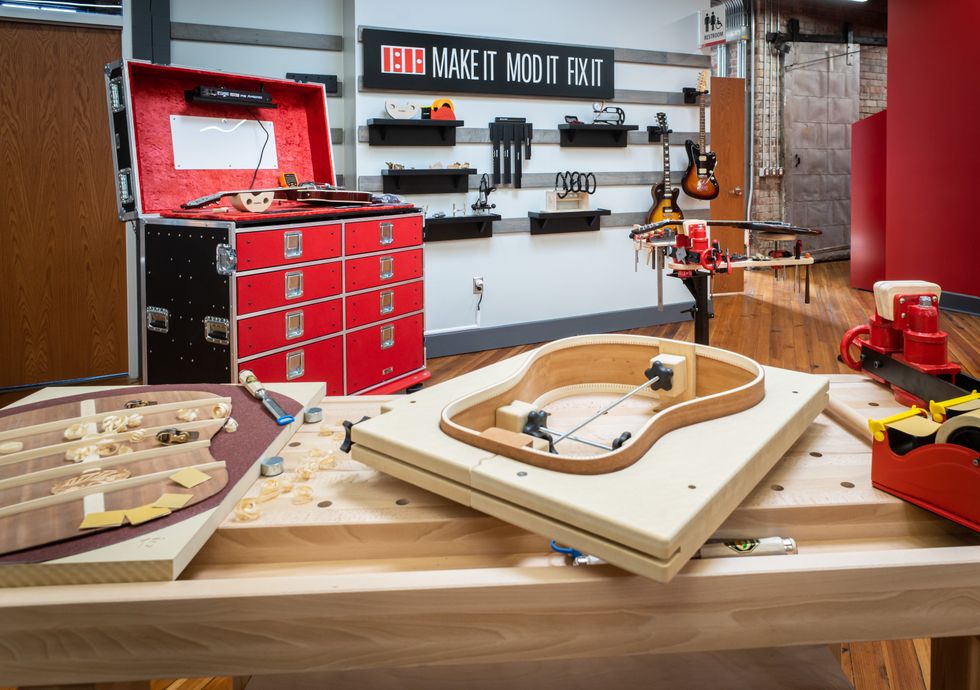

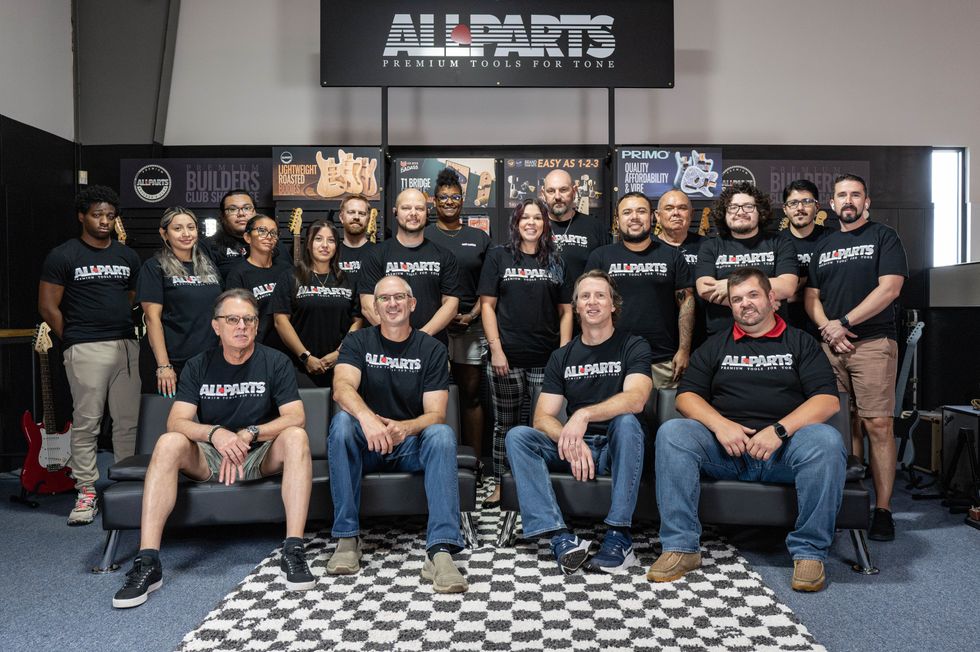 The Allparts team at their Houston warehouse, with Dean Herman in the front row, second from right.Photo by Enrique Rodriguez
The Allparts team at their Houston warehouse, with Dean Herman in the front row, second from right.Photo by Enrique Rodriguez